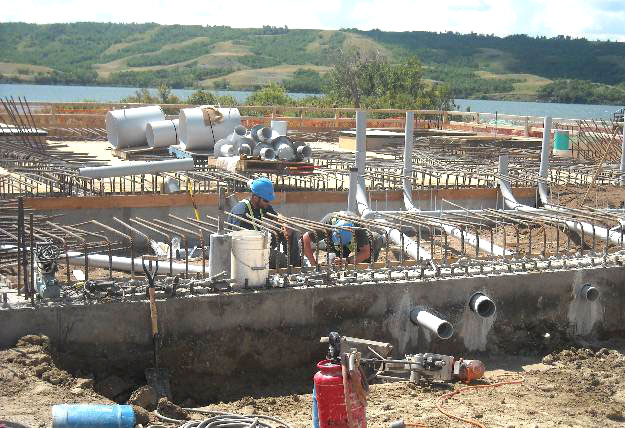VANCOUVER – News of a 26% capital cost increase and six-month start-up delay at the Legacy potash mine in Saskatchewan drove owner K+S AG‘s share price to a five-month low, but the German company remains confident the project offers attractive economics and good potential to grow into a major potash operation.
K+S broke ground at Legacy in late 2011, a year after gaining ownership of the property through a $428-million takeover of Potash One. Now, less than six months into construction, the company says estimated capital costs to build the mine have climbed from $3.25 billion to $4.1 billion.
K+S also warned that commissioning is now planned for mid-2016, six months later than previously forecast. Regardless, the company still expects to be achieve a capacity of 2 million tonnes per annum (mtpa) by 2017. Potential expansions could increase output to as much as 4 mtpa by roughly 2030.
Those tonnes are key to K+S’s production profile. K+S is Europe’s largest potash maker but this Canadian mine is at the heart of its global expansion plans, primarily because ore grades are declining in Germany’s long-operating mines. K+S currently produces 7.5 million tonnes of potash and magnesium crude salts a year.
It is because Legacy is so important to the company’s fertilizer unit that K+S is willing to spend a bit more money and take a few extra months to get the mine built. Costs increased in part because K +S decided to invest in its own installations at the port of Vancouver instead of renting. Plant modifications and rising material and labour costs also added to capital spending needs.
Cash to support the increased capital budget will come partly from new debt and partly from existing cash reserves and future cash flows.
In announcing the new Legacy plan, K+S CEO Norbert Steiner said the Canadian operation will be “an important part of the future of K+S” as it will be the main source for distributing to the emerging regions of Asia, South America, and North America. Steiner also noted that despite the changes to costs and timing, Legacy remains “economically attractive and still fulfills the requirements…to earn a 15% premium on the cost of capital before taxes.”
Legacy will be a solution mine, which means potassium chloride will be leached from its host rock in situ. The process involves two drill holes. The first hole is used to send hot water down to the potash-bearing layers of rock. As the minerals dissolve, an underground cavern is created that is partially filled with potash-laced water, or brine. A second borehole, drilled 70 to 100 metres away from the first, taps into the underground cavern and is used to pump the brine to the surface.
Legacy will be the first new potash mine in Saskatchewan in almost 40 years. The province’s first potash mine – an underground mining operation – started producing in 1962. Two years later the first solution mine started operating. By 1971, Saskatchewan was home to ten potash mines, and today the province remains the second-largest potash-producing region in the world.
The Legacy news pushed K+S’s share price down 4.1% to an intraday low of €32.08, its lowest point since November. The stock, which is listed on the German DAX exchange under the symbol SDF, is down 8% this year. Regardless, K+S’s potash business unit has outperformed its rivals over the last year – Potash Corp. of Saskatchewan (POT-T) and Russia’s OAO Ukralkali have both cut production amid faltering demand. In addition, Vale (VALE-N) announced last month that its Rio Colorado project in Argentina is no longer economically viable while BHP Billiton (BHP-N) is holding off on developing its potash project in western Canada.
Potash prices, which hit a record high of $872 per tonne in 2009, have fallen off in recent years and currently sit near $400 a tonne.


Be the first to comment on "Costs climb, commissioning delayed at Legacy potash mine"